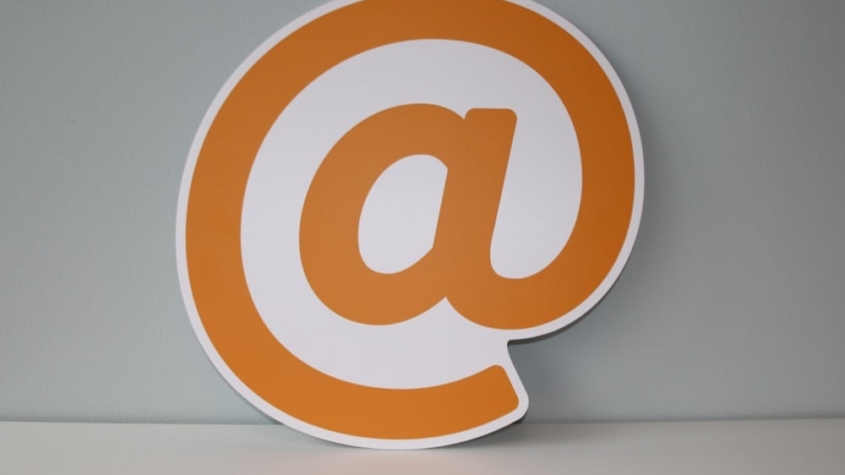Sending Staff Emails
Email was invented in 1971, email is six years older than Post-It notes!
Even though email predates almost all technology that we use today, and even though practically every profession uses email as the official method of communication, we (collectively) suck at it!
There have been days where my email inbox has an email from an 8th grader who wants to apply to the program I lead at my school, right next to an email from my boss’ boss, and I can’t tell the difference between the two. It’s a shame, but at the same time, I can’t blame anyone for it. I have never been taught how to write an email.
I can write a three-prong thesis about The Great Gatsby, an APA research paper, or a scientific poster, but the thing I do dozens of times a day for my whole career, I had to teach myself.
Here are things I think about when I send an email at work.
BCC
My first question is about how many people I am sending this email to. If I am sending this email to a group larger than my department, I will use the Blind Carbon Copy (BCC) feature that is present in all email clients.
If you send an email to people using BCC, you prevent everyone from seeing who else got that email (great for privacy if you are sending it to a list of unrelated people) and, most importantly, prevent people from sending a reply-all. See my Sanity Saving Email Rules post to get a better understanding of why I care about this so much.
Subject Line
A quick search of my email returns 97 emails with a subject line of “Please Read.” This makes finding a critical email very difficult. Some of these “Please Read” emails span the gamut from please fill out this survey to help my student with a project, to information about bomb threats.
Every email I write has a clear and unique subject line, yours should too.
Another habit that I have gotten into is prefixing my subject line to let the recipient know what type of email this is. Either “FYI:” or “ACTION REQUIRED:”
So instead of “Please Read,” I send “FYI: Sharepoint vs. Teams.”
Brevity
According to Boomerang, who analyzed over 40 million emails sent with their service, the ideal email length is between 75 and 100 words. The response rate declines gradually as the length increases to 200 words.
Single Purpose Emails
The moral of the story, even in a professional context, is that you need to keep your emails short and to the point. To make that happen, you have to make sure each email is focused on one thing.
The mega state-of-the-union style email doesn’t make a lot of sense in my experience. Instead of saving up those topics to send in one blog-post length email, you should just send the emails as each need arises.
Write in Chunks, Not Paragraphs
Use that return key liberally, it’s not going to break!
Each individual thought in your email should be its own chunk of text. The five-sentence paragraph, or even worse, the unbroken wall of text, is not the move for email (or my blog).
With people reading on their phones, or on the go, they will get interrupted and lose their place in your wall. Having chunks of text makes it easier to resume reading in the moment, or return to the email and find relevant information again later.
Bullets
- Bullets are great for email.
- But not presentations, don’t get me started…
- Bullets are fast to write and to read.
- Power users of email can respond to your questions right in line with your questions
- Happened to me today.
- I got specific answers to two complicated questions because I made it easy for the person to respond.
- In 30 minutes, no less!
Action Items
If there are action items for the person receiving my email, you know my subject line will start with ACTION REQUIRED: but here are a few more things I do to make sure things get done.
I use absolute dates and times (assisted by this Keyboard Maestro macro) for due dates. I am also explicit with my description of the action item.
Please complete the attached monthly safety inspection checklist and deliver it to my classroom by 2 pm this Friday (06-12-20).
I will also state, with the same precision, what I will do for the person I am emailing if there is an action item for me to complete.
I will arrange for an aide to deliver the supplies for your lab by the end of 3rd period tomorrow (06-10-20).
Proper Use of Emphasis
I have received emails that were hundreds of words long, and none of those words were in “normal font.” Meaning every word was either enlarged, bolded, underlined, italicized, highlighted, or a different color.
Not only was this painful to my eyes, but it also had the completely opposite effect the author intended; they made everything equally important, so nothing was.
I rarely use emphasis (bold, underline, or italics) in my emails, except to make headings. You will see the structure that text gains by adding headings if you look through my blog posts. In my experience, this is all a well-written email needs too.
Fonts
I love fonts, I have favorites, I have old favorites that I have replaced because my opinions have changed over time. I am all about the deliberate choices of fonts to display the correct tone. Email is not the place for showing your love of fonts.
I use black 12 point Arial, and I have never seen a valid reason to use anything else. Using Comic Sans is not ironic, and using Lucida Handwriting does not make us think you wrote your email by hand. It just makes it harder to read.
There is too much variability in email clients to assume you can do anything fancier than bold, underline, or italics, with a basic font.
Conclusion
I know this can seem pedantic, and maybe it is; but with the volume of email people deal with every day and stakes that ride on many of those emails, I think it is worth our time to get better at it.












Leave a Reply
Want to join the discussion?Feel free to contribute!